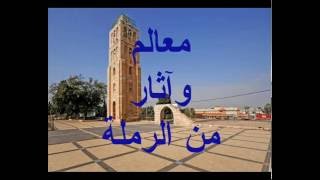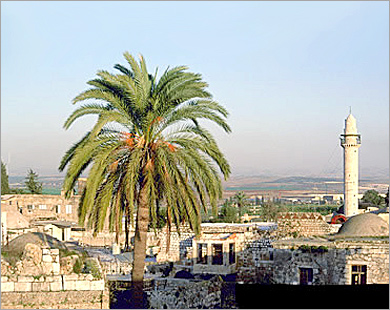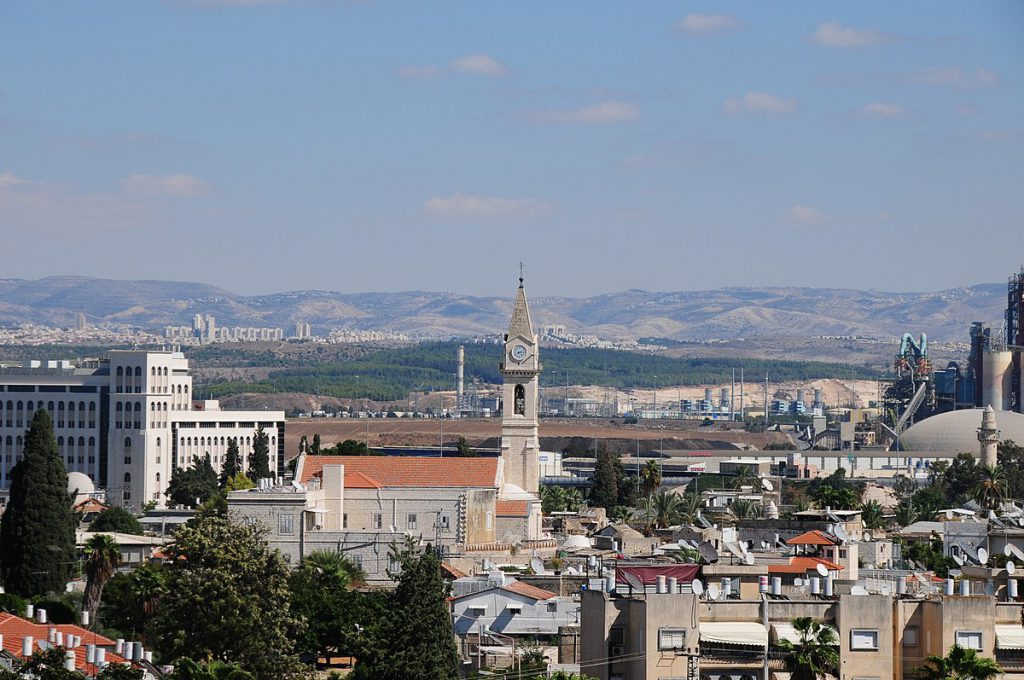
Ramla (Hebrew: רַמְלָה, Ramla; Arabic: الرملة, ar-Ramlah), also spelled Ramle, Ramlah,[2] Remle and historically sometimes Rama, is a city in the Central District of Israel.
Ramla was founded in the early 8th century CE by the Umayyad prince Sulayman ibn Abd al-Malik as the capital of Jund Filastin, the district he governed in Bilad al-Sham before becoming caliph in 715. The city’s strategic and economic value derived from its location at the intersection of the Via Maris, connecting Cairo with Damascus, and the road connecting the Mediterranean port of Jaffa with Jerusalem.[3] It rapidly overshadowed the adjacent city of Lydda, whose inhabitants were relocated to the new city. Not long after its establishment, Ramla developed as the commercial centre of Palestine, serving as a hub for pottery, dyeing, weaving, and olive oil, and as the home of numerous Muslim scholars. Its prosperity was lauded by geographers in the 10th–11th centuries, when the city was ruled by the Fatimids and Seljuks.
It lost its role as a provincial capital shortly before the arrival of the First Crusaders (c. 1099), after which it became the scene of various battles between the Crusaders and Fatimids in the first years of the 12th century. Later that century, it became the centre of a lordship in the Kingdom of Jerusalem, a Crusader state established by Godfrey of Bouillon.
Ramla had an Arab-majority population before most were expelled or fled during the 1948 Arab–Israeli War.[4] The town was subsequently repopulated by Jewish immigrants. As of 2019, Ramla’s population was 76% Jewish and 24% Arab (see Arab citizens of Israel).[1] In recent decades, attempts have been made to develop and beautify the city, which has been plagued by neglect, financial problems and a negative public image. New shopping malls and public parks have been built, and a municipal museum was opened in 2001.[5]

By 1011–1012 the Jarrahids controlled all of Palestine, except for the coastal towns, and captured Ramla from its Fatimid garrison, making it their capital. The city and the surrounding places were plundered by the Bedouin, impoverishing much of the population. The Jarrahids brought the Alid emir of Mecca, al-Hasan ibn Ja’far, to act as caliph in defiance of the Fatimids.[35] The development was short-lived, as the Jarrahids abandoned al-Hasan after Fatimid bribes, and the caliphal claimant left the city for Mecca.[36] A Fatimid army led by Ali ibn Ja’far ibn Fallah wrested control of Ramla from the Jarrahids, who continued to dominate the surrounding countryside.[37] The next ten years were marked by peace, but in 1024 the Jarrahids renewed their rebellion. The Fatimid general Anushtakin al-Dizbari secured Ramla for a few months, but the Jarrahids overran the city that year, killing and harassing several inhabitants and seizing much of the population’s wealth. They appointed their own governor, Nasr Allah ibn Nizal.[38] In the following year, al-Dizbari drove the Jarrahids out of Ramla, but was recalled to Egypt in 1026. In 1029 he returned and routed the Jarrahids and their Bedouin allies.[39]
The Persian geographer Nasir-i-Khusrau visited the city in 1047, remarking

amla was part of the territory allotted to a proposed Arab state under the 1947 UN Partition Plan.[63] However, Ramla’s geographic location and its strategic position on the main supply route to Jerusalem made it a point of contention during the 1947–1948 civil war, followed by the internationalised 1948 Arab–Israeli War. A bomb by the Jewish militia group Irgun went off in the Ramla market on February 18, killing 7 residents and injuring 45.[64][65] After a number of unsuccessful raids on Ramla, the Israeli army launched Operation Dani. Ramla was captured on 12 July 1948, a few days after the capture of Lydda. The Arab resistance surrendered on July 12,[66] and most of the remaining inhabitants were driven out.[67] A disputed claim, advanced by scholars including Ilan Pappé, characterizes this as ethnic cleansing.[68] After the Israeli capture, some 1,000 Arabs remained in Ramla; more were transferred to the town by the IDF from outlying Arab settlements.

Published: Jan 15, 2022
Latest Revision: Jan 15, 2022
Ourboox Unique Identifier: OB-1264344
Copyright © 2022








